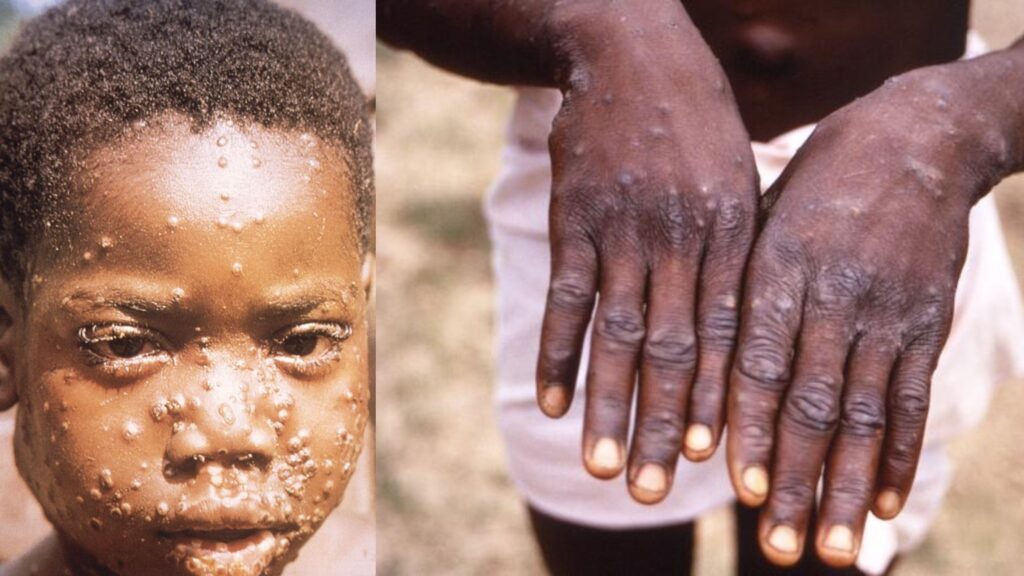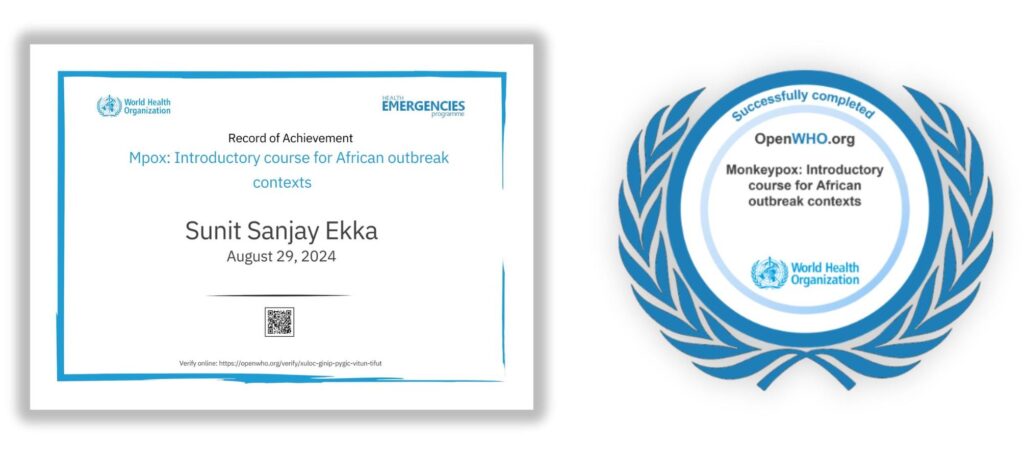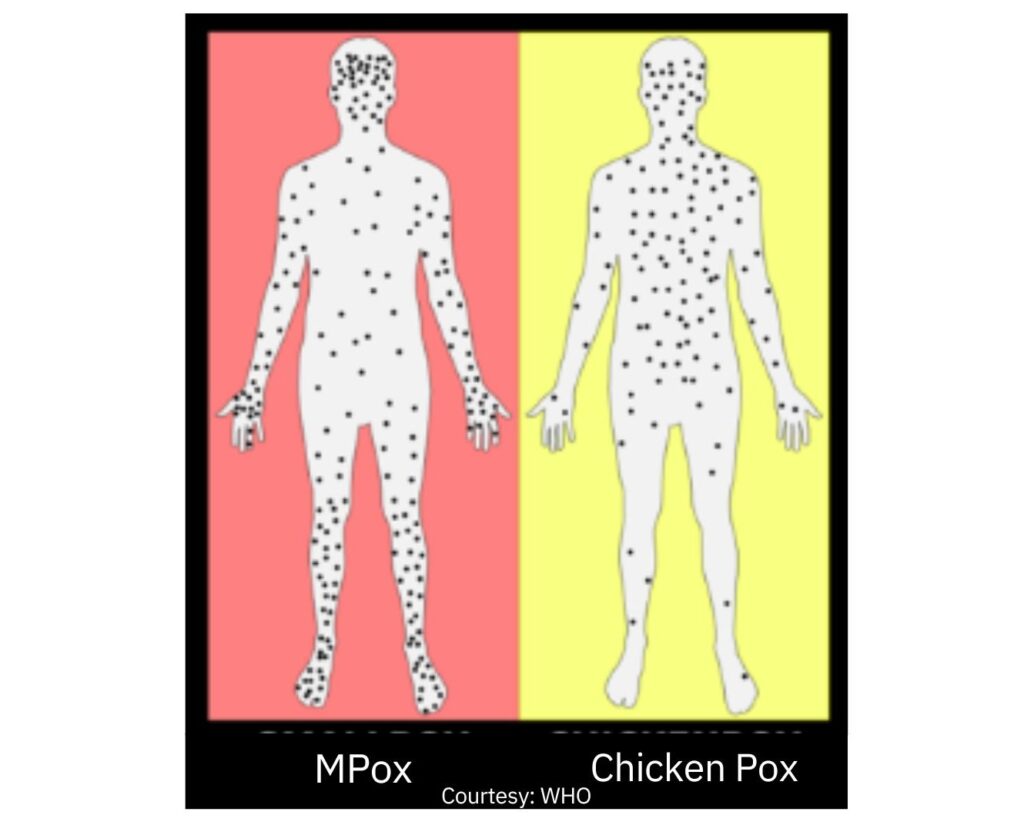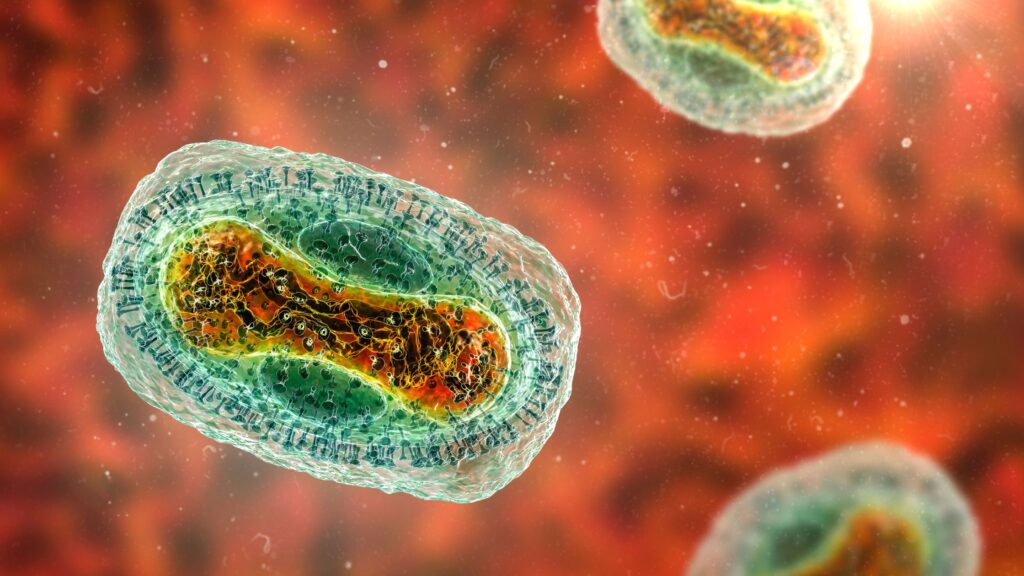Last updated on June 5th, 2025 at 01:07 pm

We all witnessed the COVID-19 pandemic of 2019 very closely and deeply felt its impact. Recently, another disease has been spreading very rapidly.
If we do not become vigilant about it now and do not keep ourselves well-informed, it could also become a pandemic.
What is Mpox? Is mpox the same as monkeypox?
Mpox, also known as monkeypox, is a disease that causes pox-like rashes on the face and other body parts. It is similar to chickenpox, but it can take a more severe form. The mortality rate for Mpox is also higher than that of chickenpox.
In 1958, during research conducted on monkeys in Denmark, Monkeypox was first observed in those monkeys, and that’s when the disease was named Monkeypox. In 1970, the first symptoms of Monkeypox in humans were found in the Democratic Republic of Congo.
Mpox, also known as Monkeypox, is caused by the Monkeypox virus. This virus is transmitted from animals to humans, making it a zoonotic disease.
There are two types of this infection: one is clade 1, and the other is clade 2. This infection spreads more rapidly in dense tropical forests because there is a higher chance of contact between humans and animals.
The Urgency of Awareness

I’ve put a lot of effort into writing this article. I took a certified course on the World Health Organization (WHO) website about Mpox to ensure I provide you with accurate and authentic information.
On August 14, 2024, the World Health Organization declared Mpox a global public health emergency. We should also become alert and ensure it does not spread further.
The sooner we understand this disease, the better we can work to contain it. We can help our families, the government, and the health department.
What makes this even more concerning is that, according to recent news reports, children under 10 years of age are more affected by this infection.
This outbreak first occurred in 2022. Gradually, the disease kept spreading, and by 2024, it had emerged as a global health emergency. Today, over 100,000 confirmed cases have been reported, and more than 200 people have lost their lives to this disease. So, think about how severe this disease is.
For real-time updates on global outbreaks, track WHO declarations.
Mpox Symptoms: How to Tell It Apart from Chickenpox
Mpox, or Monkeypox, is a disease similar to chickenpox. Many of you might have seen chickenpox, where bumps appear all over the body, but Monkeypox is somewhat different from chickenpox.
The rashes in this disease are more prominent in size than those in chickenpox, and they are filled with infectious fluid.

According to the CDC, Mpox symptoms typically appear within 5–21 days.
The incubation period can last 1-5 days when someone is infected. This means the infection spreads in the body during that time. After the fifth day, symptoms gradually begin to appear.
- The first symptom is fever,
- With the fever, the whole body will ache.
- You may experience weakness, muscle pain, back pain, and body aches that affect your entire body.
- You’ll feel tired even after walking a short distance, your muscles will fatigue, you’ll have headaches, and you’ll feel weak.
- As soon as the fever starts, within 1-3 days, rashes will start appearing on the body.
- Compared to the rashes in chickenpox, the rashes in Mpox are larger in size.
- In chickenpox, the rashes are mostly found on the face and body, but in Mpox, the rashes can appear on the face, both hands, both feet and even on the palms of your hands and the soles of your feet.
- These rashes or boils can also appear inside the mouth, on the genitals, private parts, and the anus area, which can be very painful.
- The rashes on the body last for three to four weeks, gradually drying up and falling off afterwards.
How is Mpox Spread? 7 Ways the Virus Transmits
- Mpox can spread from animals to humans and from humans to humans. It is found in certain species of monkeys and rats.
- When a person comes into contact with an infected animal (learn why kissing pets can be risky). The disease can spread from the animal to the human.
- From human to human transmission, it primarily spreads through body fluids, meaning if there’s a cut on our body.
- The virus can spread through mucous membranes, including the mouth and genitals.
- It can also spread through other routes, such as respiratory droplets.
- When I was writing this article (01 September 2024) 2024, during the global health emergency, it was found that this virus is also spreading more through sexual contact or sexual transmission.
- It can spread through skin-to-skin contact, body-to-body contact, and it’s also an airborne disease, meaning it can spread through droplets that come out when we sneeze.
Preventive Measures
How can we protect ourselves from this? How can we protect our families? It’s very important to know this.
- First and foremost, anyone infected should always wear a mask.
- If someone in your family is infected, everyone else should also wear masks, or you should isolate the infected person in a separate room, similar to how exercise strengthens immunity against COVID-19, masking and isolation help curb Mpox. This way, the infection does not spread.
- Avoid any close contact with them, maintain a safe distance, and do not share their bedding, towels, or bed sheets. These should be personal items for the infected individual.
- Additionally, you should follow the same precautions we took during the COVID-19 pandemic, such as sanitising your hands frequently and washing your hands with soap using these proven hand hygiene steps for 20 seconds.
- If you are a healthcare worker, you should use gloves and masks and dispose of them after one use.
The precautions we learned during the COVID-19 pandemic are the same ones we must follow here. We must adhere to the same protocols. If an infected person goes to a public place, they must wear a mask. This is how we can contain the virus and prevent it from spreading.
Is There a Treatment?
The treatment involves vaccination, but a specific vaccine for Mpox has not yet been developed. However, scientists have found that the smallpox vaccine, used until smallpox was completely eradicated in 1980, effectively controls Mpox.
Since 1980, the production of the smallpox vaccine has been reduced or stopped, but scientists have discovered that the smallpox vaccine is effective in controlling Mpox.
This vaccine is currently used to contain or prevent Mpox, but it is not given to everyone. It is administered to those who are seriously ill and healthcare workers who have to work with such patients.
Stay Alert and Informed
As I conclude, I want to remind you that if anyone in your family has a high fever, body aches, muscle pain, joint pain, headaches, back pain, and weakness, and if they develop bumps on their body within 1 to 3 days after the fever starts, you should immediately contact your doctor so they can take further samples and investigate to confirm whether it might be a case of Mpox.
Information is the key to prevention. We all need to be alert now. This disease has already spread to 119 countries. So, as I conclude this article, I advise you all to take care of your family members. Stay alert, take care of yourselves. Thank you for reading.
Keep Reading: Mpox: what to watch out for, treatment and what to worry about
Mpox (Monkeypox) FAQ: Your Top Questions Answered
Have more questions? Drop them in the comments or read our detailed guide on Mpox treatments and complications.
The author is a physiotherapist who has been practising for the last 17 years. He holds a Bachelor's in Physiotherapy (BPT) from SVNIRTAR (Swami Vivekananda National Institute of Rehabilitation and Research), one of the prestigious physiotherapy schools in India.
Whatever he learns dealing with his patient, he shares it with the world through blogs and e-books. He also owns a YouTube channel, "Sunit Physiotherapist" with over 8 lakh active subscribers. Here, he shares everything he gets to learn serving the patient.

